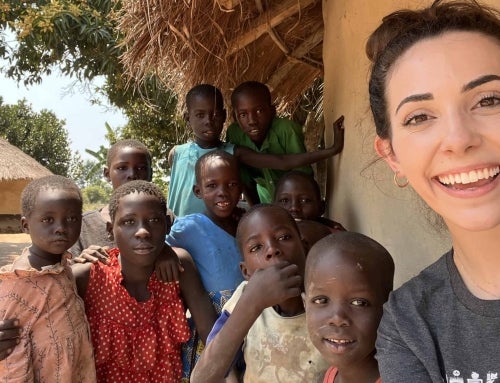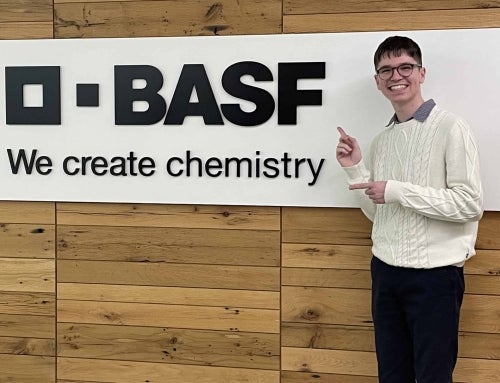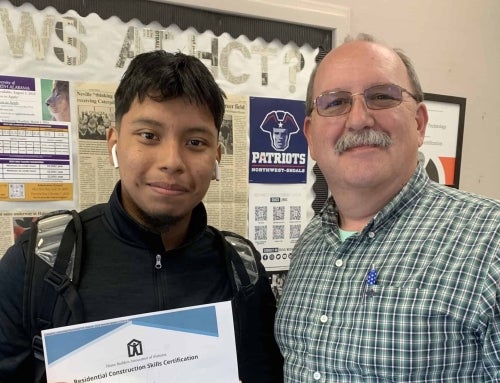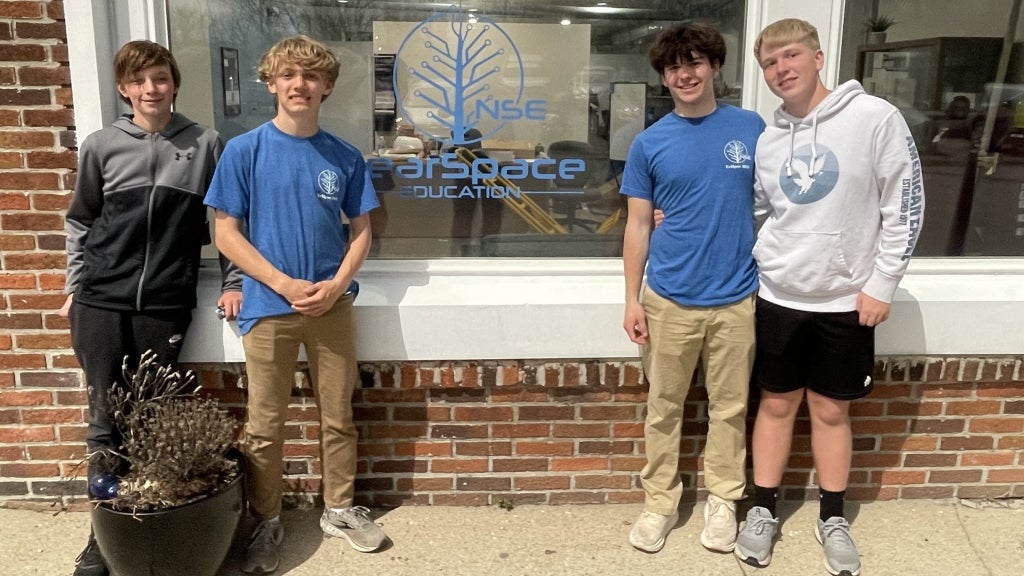
Stockbridge FFA members, from left: Andrew Hayes, William Gancer, Jason Gruber and Owen Cipta.
Jason Gruber, a 2024 Stockbridge High School graduate and FFA alumnus, is a rising star in the fields of space and agriculture. During the 2024 total solar eclipse, Gruber led a team of FFA members in his chapter to launch a cube satellite and high-altitude balloon into the atmosphere, capturing images to determine how eclipses affect crops.
Gruber’s journey began as a sophomore in Special Projects Lab, a student-led STEM course at his school that eventually merged with the Stockbridge FFA Chapter in Michigan. “I love working on hands-on projects,” he says.
Joining FFA helped Gruber discover close ties between space and agriculture, and ignite his research passions. With help from his advisor, Bob Richards, who’s been teaching at Stockbridge for 24 years, Gruber’s research dreams became a reality.
“In most high school classes, if a kid says they want to build a satellite, most people will look at that kid and say, ‘Are you crazy?’” Richards says. “In my classroom, I’m like, ‘Let’s figure out a way to do it.’”
Michigan FFA State Advisor Mark Forbush is also a supporter of project-based learning.
“The more we can have students doing hands-on activities, creating things, learning things and problem-solving, that’s where they learn the most,” Forbush says.
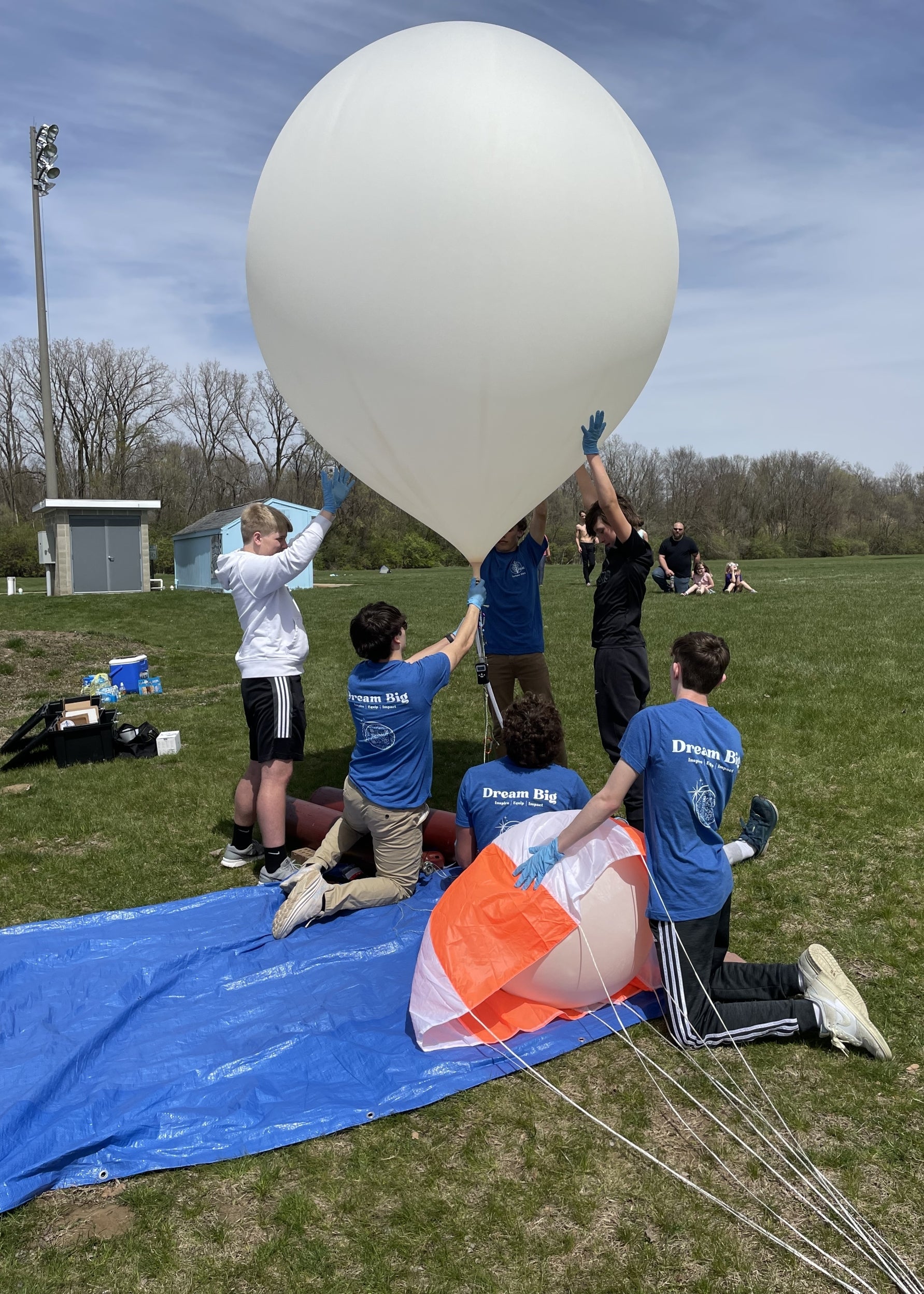
Stockbridge FFA members prepare for the launch by arranging payloads, filling the balloons and ensuring all parts are functional.
Up, Up and Away
In April, Gruber and his crew traveled from their hometown to Marion, Ind., for the launch — a site that was located in the eclipse’s path of totality.
The team began by arranging payloads, ensuring cameras and batteries were functional and preparing the 200-gram hydrogen balloon for the parachute and the 800-gram hydrogen balloon for the main lift. Once released, the balloon took an hour to reach and an hour to descend. They tracked real-time location and atmospheric data from their phones, which showed weather, luminosity, altitude changes and temperature.
Following the predicted landing path, the team received a call from a family 116 miles away in Columbus Grove, Ohio, who found the balloon and payload.
Through this project, students were able to gain insights into how crops are affected by changes in light, temperature and radiation, as well as test their CubeSat (a compact satellite) hardware and software in a near-space environment.
“The experience helped us understand how agriculture may be affected by solar eclipses and the importance of how earth science affects crops,” Gruber says.

The solar eclipse just before the path of totality. Photo by Owen Cipta.
Blast Off
Richards says the rewards for project-based learning are immense for both students and teachers. He’s proud to teach a course that allows students to chase their passions. “You’ve got to trust the kids,” Richards says.
Gruber, on the other hand, has his sights set on continuing to learn new things. This fall, he’ll attend the University of Michigan to study mechanical engineering.
“I want to explore space and be the type of person who can find out new things we’ve never heard of,” he says.









